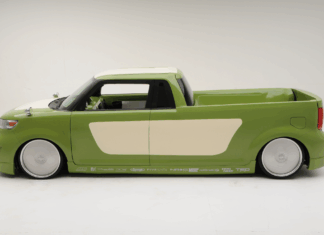Mercedes showcased the latest in its powertrain development for the upcoming CLA model.
We’ve seen a pivot from automakers in recent months, where several are moving from a headlong rush toward all-electric platforms and offering more of a mixed offering to woo a wider range of buyers. That includes Mercedes-Benz, which is still working on full BEVs, but will also launch new models — including the upcoming 2026 CLA-Class — with internal combustion options.
This new model brings the “Mercedes-Benz Modular Architecture” (or MMA, no not that MMA) into focus. While it does bring in a “skateboard” design that’s been all the rage for battery-electric models, Mercedes says this is a “flexible” architecture that can incorporate hybridized cars, including the new CLA and two upcoming SUVs.



Here’s what the internal combustion side of the MMA platform looks like
With the new MMA setup, the automaker can essentially offer configurations every which way along what we’ve come to expect from internal combustion and electric vehicles. With the BEVs, we can get either a single- or dual-motor setup with all-wheel drive capability, while the company can also design a front-engine, front-drive layout for the ICE model, with the ability to send power rearward through an electrified 8-speed dual-clutch tranmission to create a 4Matic all-wheel drive version.
Now, while we are still talking about internal combustion in the mix, we are not talking about status quo or reverting back to the old-school world of big and thirsty V8s, as much as some folks may prefer that. Instead, the 2026 Mercedes-Benz CLA, among others, will get a new M252 1.5-liter four-cylinder engine as part of a 48-volt mild-hybrid configuration. With a narrower bore and shorter stroke than the 2.0-liter four-pot, the new engine runs with a fairly high (for a turbocharged engine) 12:1 compression ratio and uses the Miller cycle to achieve better emissions while still putting out 188 horsepower and 221 lb-ft of torque. The engine also pairs with a 20 kW (26 horsepower) electric motor integrated into the 8-speed gearbox. The compact motor can aid the gas engine’s performance, or it can decouple from the engine entirely using its own clutch to run under electric power alone, in some circumstances.
What about the EV?
While Mercedes-Benz is changing up the strategy a bit to include a hybridized gasoline option, it is still obviously working on its battery-electric offerings, too. The new CLA is the smallest sedan to join the electric lineup, and brings an 800-volt architecture into the fold for much better DC fast-charging capability, up to 320 kW.
Alongside a couple battery pack options, the electric CLA brings in a standard rear motor cranking out 268 horsepower. Like I mentioned earlier, though, you’ll also still be able to get a 4Matic all-wheel drive variant, which adds another 107-horspower front motor into the mix. In AWD models, the front motor actually doesn’t engage all the time, instead decoupling itself from the front differential when it isn’t needed to reduce friction (and, naturally, improve efficiency). So, you’ll only be using the beefier rear motor most of the time, until the front motor engages for extra power under hard acceleration, or when the onboard computers determine it’s necessary for better traction. To further improve efficiency in the cruise, the rear motor also gets a two-speed gearbox so it can run at a lower RPM at highway speeds to strike the best balance of performance and range.
The larger of two battery packs Mercedes showcased this week is an 85-kWh unit with a nickel-manganese-cobalt (NMC) chemistry. This pack is wired in series to achieve the aforementioned 800 volts, and uses 192 cells, with the full pack weighing in at around 1,094 pounds (496 kg). There’s also a smaller and cheaper, 58-kWh lithium-iron phosphate (LFP) battery alternative that comes in at about the same size and weight, but it’s unlikely we’ll see that option launch in the range-anxious U.S. market.
On the higher end, Mercedes-Benz promises around 466 miles of driving range with that larger pack in the electric CLA. That is using the European WLTP cycle, so EPA figures will probably dial that back to around 375 miles or so. Considering we’re talking about a Tesla Model 3-sized BEV, though, that’s still an impressive figure that goes toe-to-toe with the most popular EV on the market.
To further bolster its range claims, Mercedes took a prototype electric CLA to Nardò test track in Italy. In a 24-hour endurance run at its top speed of 130 mph and 40 10-minute quick-charging stops along the way, the automaker managed to cover 2,309 miles. That beats the previous five-year record held by the Porsche Taycan, where Porsche covered 2,128 miles in the same time span.
When will the new CLAs actually hit the streets?
While Mercedes-Benz released an extensive statement on this technological showcase, we still have a bit of a wait for more U.S.-specific technical details and information buyers really want to know (including EPA range, trim structure and pricing for the ICE and EV models). The 2026 CLA lineup should make it stateside later next year.


























